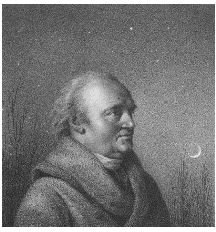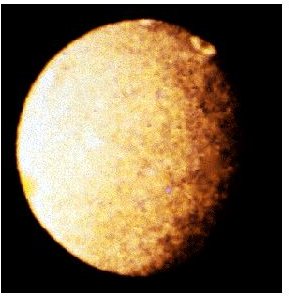Facts About Umbriel: Uranus' Moon
Umbriel
With the advent of the dwarf planet, Uranus now sits as the second furthest planet from the Sun. In an odd twist, the 27 moons of Uranus have been named after characters from the works of English playwrights Alexander Pope and William Shakespeare. The first moons to be discovered were in 1787 by William Herschel, and would not receive names for nearly a hundred years. On October 24, 1851 another English astronomer named William Lassell discovered two more moons around Uranus, which would become Ariel and Umbriel. Umbriel was named after a spirit in Alexander Pope’s The Rape of Lock.
For another century astronomy went on without knowing very much more about Umbriel. The space age exploded onto the world in
the mid 20th century, and we finally were able to get a better look at the moons of Uranus. In January 1986 the Voyager 2 probe was sent into the far reaches of the solar system and made a pass by Uranus. The probe made some interesting discoveries when scientists at NASA pointed its camera at Umbriel. First and foremost, Umbriel is dark. Compared to the other moons of Uranus like Ariel, Umbriel only reflect about half of the amount of light. On top of that, images of Umbriel showed a mysterious bright ring about 140 kilometers in diameter at one of its poles. To this day astronomers have not been able to definitively explain these characteristics of Umbriel, although there is speculation that the white ring is a frost deposit associated with an impact crater.

Umbriel itself is made up of roughly equal parts of rock and ice. It is the fourth largest, and third most distant of Uranus’ five large moons. Like most other moons, including the Earth’s moon, Umbriel is tidally locked with the planet that it orbits. This means that Umbriel always shows the same face to Uranus. The Voyager 2 probe has been the only object to study Umbriel up close, and took several pictures that allowed mapping of roughly 40% of its surface. Since Uranus orbits the Sun nearly on its side and Umbriel orbits Uranus on its equatorial plane, it has extreme seasonal cycles. Both Umbriel’s northern and southern poles go through 42 years of darkness and 42 years of light.
Facts About Umbriel
Radius: 584.7 km (363.3 miles)

Mass: 1.7 x1021 kg (3.7 x1021 pounds)
Distance from Uranus: 265, 998 km (165,277 miles)
Orbital Period: 4.14 Earth days
Orbital Eccentricity: 0.0050
Orbital Inclination to Ecliptic: 0.36 degree
Surface Albedo: 10% - 15%
Surface Gravity: .23 m/s2
Apparent Magnitude: 14.5
Escape Velocity: 0.52 km/s
Sources
https://solarsystem.nasa.gov/planets/profile.cfm?Object=Umbriel
https://pds.jpl.nasa.gov/planets/captions/uranus/umbriel.htm
https://apod.nasa.gov/apod/ap960407.html
Credits
William Herschel: https://seds.org/messier/Pics/History/herschel.jpg
Voyager Umbriel: https://nssdc.gsfc.nasa.gov/imgcat/midres/vg2_p29502.gif
Voyager Umbriel 2: https://apod.nasa.gov/apod/image/umbriel_vg2.gif
